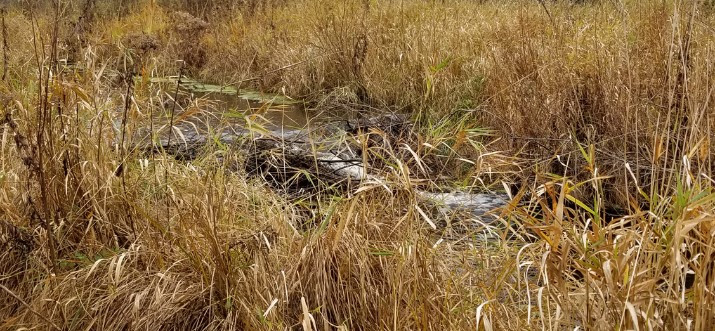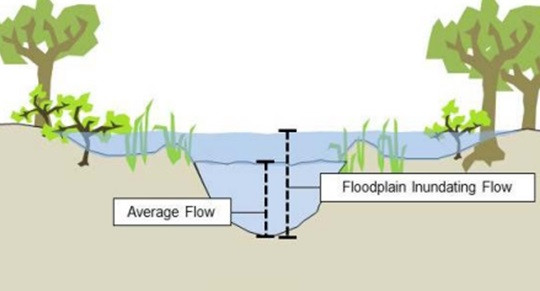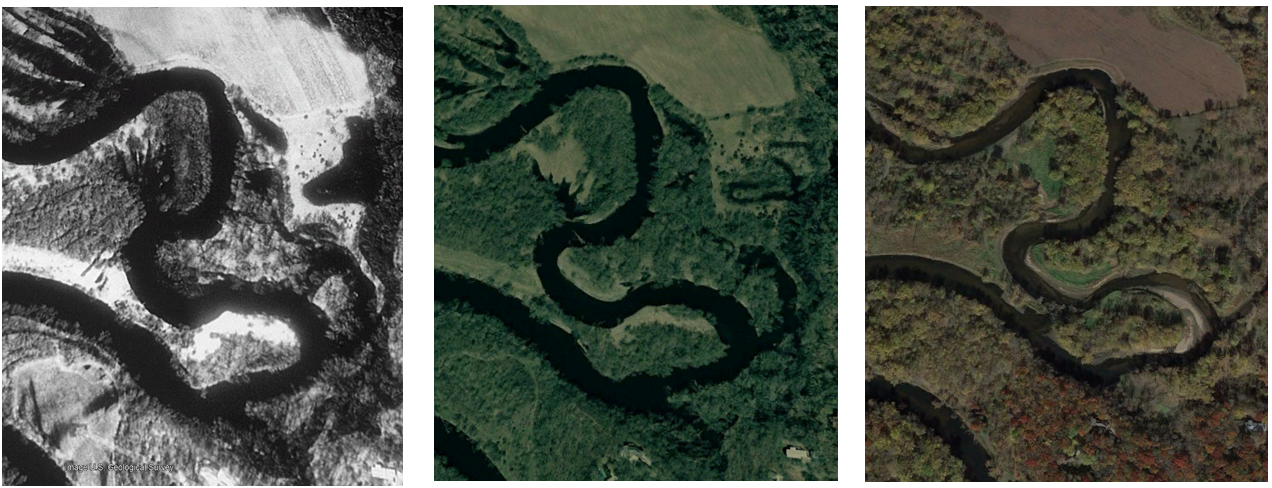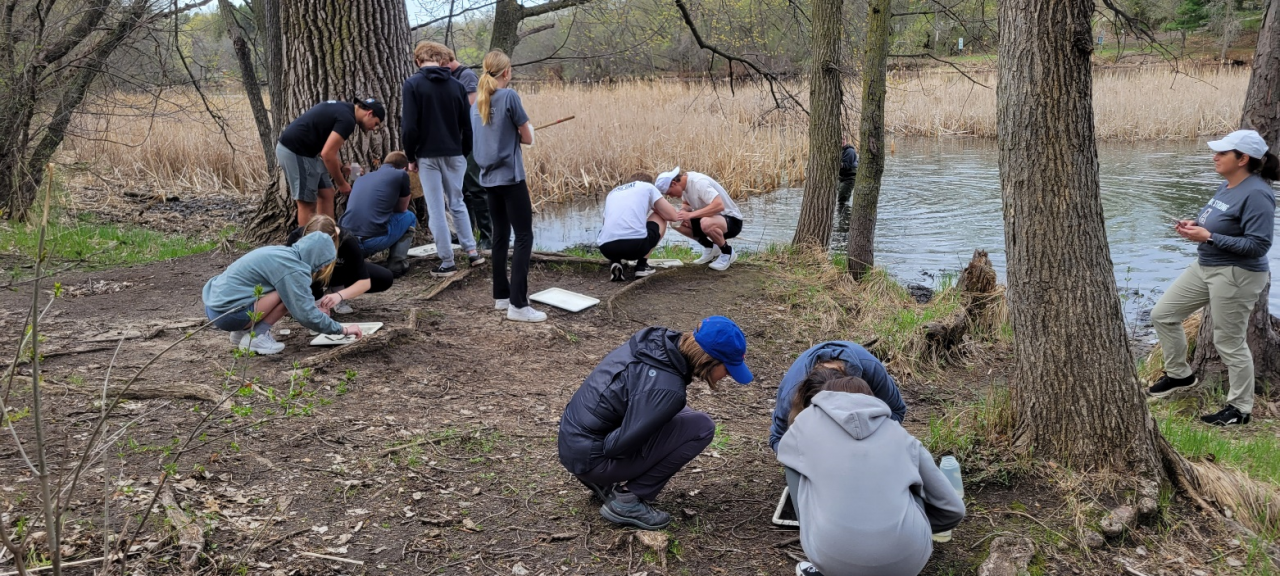During a recent site visit to explore wetland restoration opportunities, ACD staff came across a fantastic example of beavers' "engineering" skills in action! A series of three beaver dams, located near the outfall of a Rum River tributary, were effectively slowing and spreading the stream's flow into the surrounding floodplain wetlands. Healthy connections between streams and their floodplains provide numerous water quality and habitat benefits, and in this case those benefits also extend to the Rum River immediately downstream.
Many streams in modified landscapes take on excess water from artificial drainage features like ditches and storm pipes. Over time and especially during extreme precipitation events, these higher volumes of water often increase erosion within the stream, which can lead to the straightening and downward-cutting ("downcutting") of the stream channel and, as a result, the disconnection of the stream from its floodplain (see the figures below, produced by American Rivers).
Floodplain reconnection efforts are an increasing priority amongst many conservation organizations, but they can be costly and complicated – particularly if development has occurred within the floodplain. However, in areas where streams have room to spill into their floodplains without causing damage, allowing and even promoting beaver activity can be a cost effective way to help restore riparian corridors. Learn more about the benefits of beavers in the articles below.
- Riding Mountain National Park, Canada
For more information contact Breanna Keith, Water Resources Technician, at











